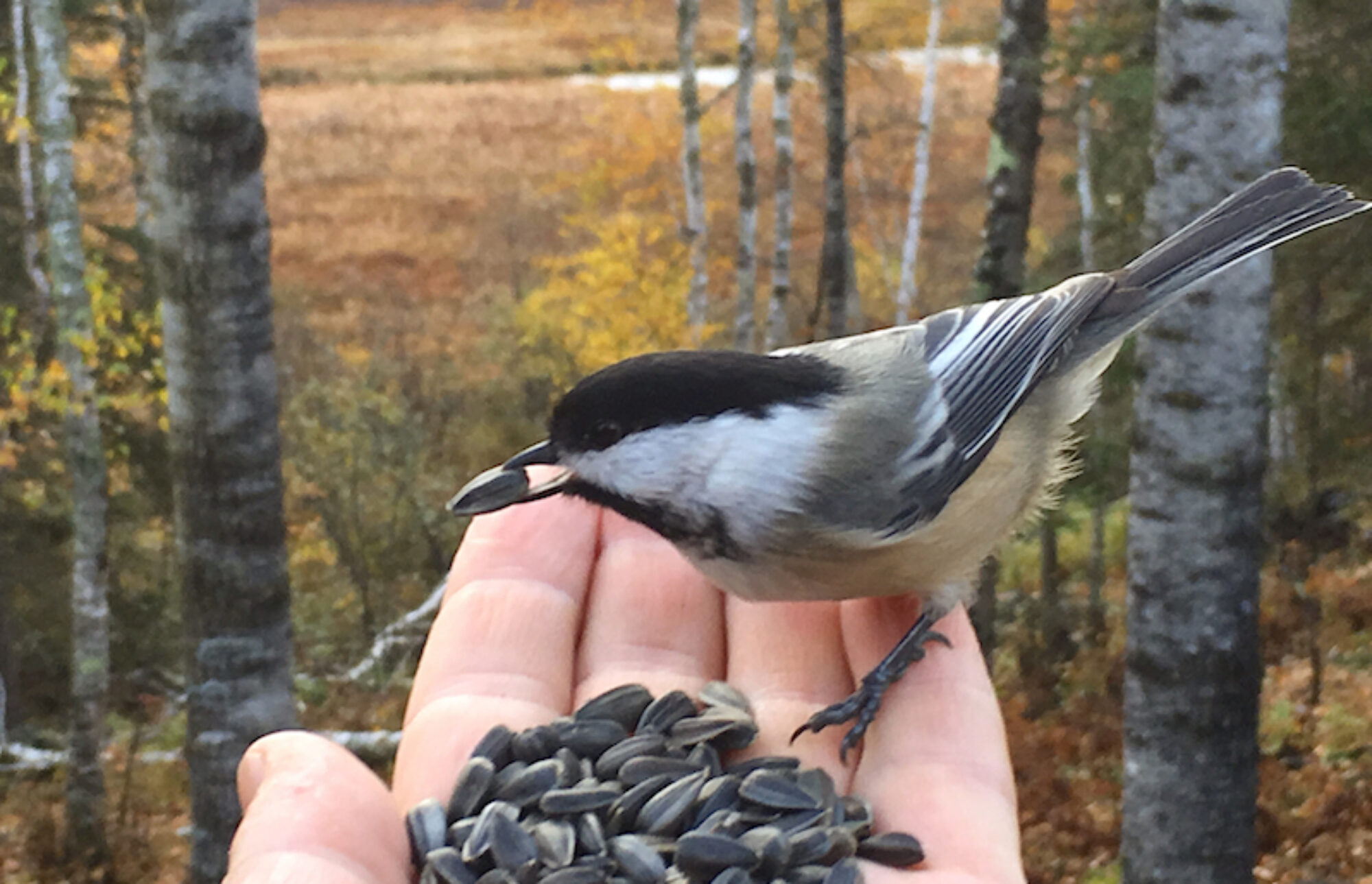By Todd Burras
CHISHOLM, MINN. – What does one do to christen a new year when it’s 15 degrees below zero and the ground is covered with 6 inches of snow?
If you’re Bill Tefft and Susan Meisner, you get up early and drive mile after mile in town and the country, stopping frequently and getting out occasionally to take a better look or tromp through the snow in search of a silhouette that vanished into the woods.
It may have been New Year’s Day but this outing was part of the National Audubon Society’s annual Christmas Bird Count.
Here’s how it works.
Each year between Dec. 14 and Jan. 5, participants are organized into groups that count birds within 15-mile diameter circles in specific areas all across North America and other parts of the world. In some counts, birdwatchers only count the number of different species they see. However, with the CBC, they record individual birds, as well.
Initially organized in 1900 as an alternative to the old “side hunt” — in which teams of Christmas revelers would gather and compete to see which team could shoot the largest number of birds and other animals — a couple dozen people in several northeastern states took notebooks and went out to several sites to count birds.
Nearly 120 years later, the CBC has become the largest and longest-running citizen science survey in the world with tens of thousands of people counting millions of birds during the three-week period. The findings are added to a massive database that helps professional researchers document and analyze changes in bird populations. When combined with breeding bird surveys, the CBC data provide, among other insights, an early warning as to when a species begins to decline.
“By conducting Christmas Bird Counts we explore and learn about the habits of our winter birds, and how they’re faring,” said Tefft, a naturalist who retired a few years ago from a teaching career at Vermilion Community College in Ely.
On this particular count, one of five or six Tefft was participating in this year, he and Meisner started early in the morning in Hibbing, Minn., before moving onto Chisholm, a neighboring city. It’s there where I met up with them, grabbing a spot in the backseat and slouching down in order to gain a better view.
We started out driving up and down side streets, looking for birdfeeders or habitat, such as crabapple trees, that might draw birds. Slowly our list grew both in number of species identified as well as in the number of birds we counted. All were birds one would expect to see in that part of the world in winter: black-capped chickadees, red-breasted and white-breasted nuthatches, downy woodpeckers, pileated woodpeckers, blue jays, common redpolls, pine grosbeaks, European starlings, rock pigeons, American crows and common ravens.
It wasn’t until after a couple hours passed as we worked our way into the country and the edge of the circle, in which we were counting, that things got a little more interesting. After spotting a ruffed grouse hunkered in a copse of a jackpine forest edge and adding it to the list, Bill stopped the vehicle and got out. He wanted to try to lure in a grey jay to add to our findings and began hooting like a barred owl, a tactic that sometimes attracts curious birds.
Bill’s convincing mimic would have fooled me but it didn’t any of the birds. We got back in the car, drove a ways and tried again. It was on the third try that Bill caught a glimpse of a bird dipping and diving across the road and disappearing into the woods.
“And, by the shape of it, I’m thinking it might be a black-backed woodpecker,” he said. “It’s certainly the perfect habitat for them.”
Bill whipped out his cell phone and within seconds was playing a sound recording of a black-backed woodpecker.
The three of us strained to listen, and then Susan and I both looked at one another.
“Over there,” she said.
With that, Susan plunged into the ditch and started in pursuit.
“I guess we’re going in,” Bill said, and we both dove into the ditch, pausing a couple times to replay the sound recording and track the bird’s location.
As we advanced through the forest, the volume of the woodpecker’s “chek, chek, chek” increased.
“Look for falling snow off the branches,” Susan said.
Sure enough, a moment later, with snow falling off a limb, I noticed a dark shape moving around the trunk of a craggy jackpine.
“A female black-backed woodpecker,” Bill said. “And not a three-toed woodpecker, which is similar.”
We celebrated the “uncommon find” as we continued the count and did once again after spotting a barred owl perched high in a white pine. In all, the daily count reached 18 species. A good number for the area, Bill assured us.
But the count to the three of us was more than just about spending time looking for birds, something we all deeply enjoyed.
“It’s also fun for me because I participate in a number of these counts in the area each winter so I end up meeting and talking to people that I normally wouldn’t have the opportunity to spend an entire day with,” Bill said.
Whether you’re driving around an old mining town on the Iron Range in northern Minnesota or hiking the canyons and ridges at Ledges State Park in central Iowa, there’s bound to be a Christmas Bird Count in your area. Next winter, you might want to take part in one. I certainly plan to.
Todd Burras can be reached at ou****************@gm***.com.
